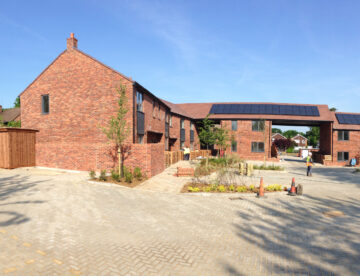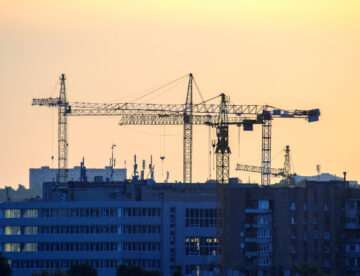BUILDING FOR LIFE

DEVELOPMENT
Through our sister company, Limon Homes, we’re bringing a range of property development projects to life.

FLAT ROOFING
We’re the ‘go to’ company for bespoke flat roofing solutions (suitable for domestic, commercial and industrial applications).

BRICKWORK
Sheriff Brickworks (our specialist brickwork company) is fulfilling masonry works to the highest standard, on time and on budget.
RECENT NEWS
As we approach the end of 2025, it’s once again time for Sheriff Construction to look back at everything this year has presented and begin making plans for the new year ahead.
From celebrating our 20th anniversary with a gala and charity challenge to securing some of our most significant roofing and brickwork contracts ever; from inspiring young people into our sector to building up our newest sister companies; and from achieving new accreditations to developing our response to cyber security, quality and social value – this year has truly given us lots to feel proud of. Join us in remembering our most special moments through our last blog of 2025.
This week, three members of the Sheriff Brickworks team delivered online workshops to Level 1 and Level 2 bricklaying students at Barnet College.
The sessions were held at the request of our client, Fairview, as part of their commitment to supporting the local community around the Victoria Quarter site (where Sheriff is currently delivering a major brickwork contract). Find out more in an extra mini blog for this week.
In today’s fast-paced construction industry, providing secure, meaningful and progressive employment is more important than ever. Skills shortages, new regulations and evolving technologies mean companies must invest in people if they want to thrive.
At Sheriff Construction, Sheriff Brickworks and our other sister companies, we believe that offering high-quality jobs goes hand in hand with continuous training and personal development – because when people are supported to grow, businesses do so too. Read on to find out how we’re putting this into practice across our sites and office teams.
The UK Chancellor’s 2025 Autumn Budget delivered last week has sparked major conversation across the country – not least within construction, where decisions around infrastructure, taxation, workforce development and wage costs will all impact the sector, some positively and some negatively.
So, what are the key measures, and how might they help or hinder construction? In this week’s blog, we’re aiming for a balanced breakdown by highlighting some of the pros and cons.
The Home Builders Federation (HBF) has published its latest State of Play 2025/26 report, offering one of the clearest pictures yet of how small and medium-sized (SME) home builders are faring – and what’s holding them back.
The findings are striking: the UK’s SME developers say they could increase housing delivery by more than 50% if longstanding obstacles around planning, regulation and affordability were addressed. Keep reading to learn more in this week’s blog.
We’ve reached that time of year again. It’s a few weeks since the clocks turned back, the afternoons feel like night-time and many people in construction – whether on site or in office-based roles – are starting and finishing their working day in the dark.
Shorter, darker days can increase the risk of accidents on site, make commuting more hazardous and create extra opportunities for crime. The good news is that a few simple habits and precautions can make a big difference. In this blog, we look at three key areas for staying safe: working on site, driving to and from work and protecting sites from crime.
On Saturday 8th November, Sheriff Construction held a charity football tournament at Play Football in Stopsley, Luton, as part of our Big Charity Challenge celebrating 20 years in business.
As well as giving our teams and their supporters a great afternoon out, the event has raised an incredible amount for our three charities of the year. Keep reading to find out how the tournament played out – and which team was finally crowned the winners!
When working on a construction site, actions like lifting, bending, climbing and moving in awkward positions are often part of the everyday job. Because of that, it can be easy to think this kind of work is enough to keep you physically fit.
The fitness industry would disagree – arguing that when people who carry out physically demanding jobs also adopt a structured fitness programme, it can lead to better performance, reduce downtime and extend careers. Find out more about why fitness matters so much and download a sample programme in this week’s blog.
Last Thursday, Sheriff Construction officially marked its 20th Anniversary in business at a celebratory Gala – bringing colleagues, clients, suppliers, friends and family together for a truly memorably evening.
We gave a flavour of what happened on this special occasion on our social media last week with a promise to share a more detailed update. Now, take a look at this week’s blog for the full story.
ACCREDITATIONS














